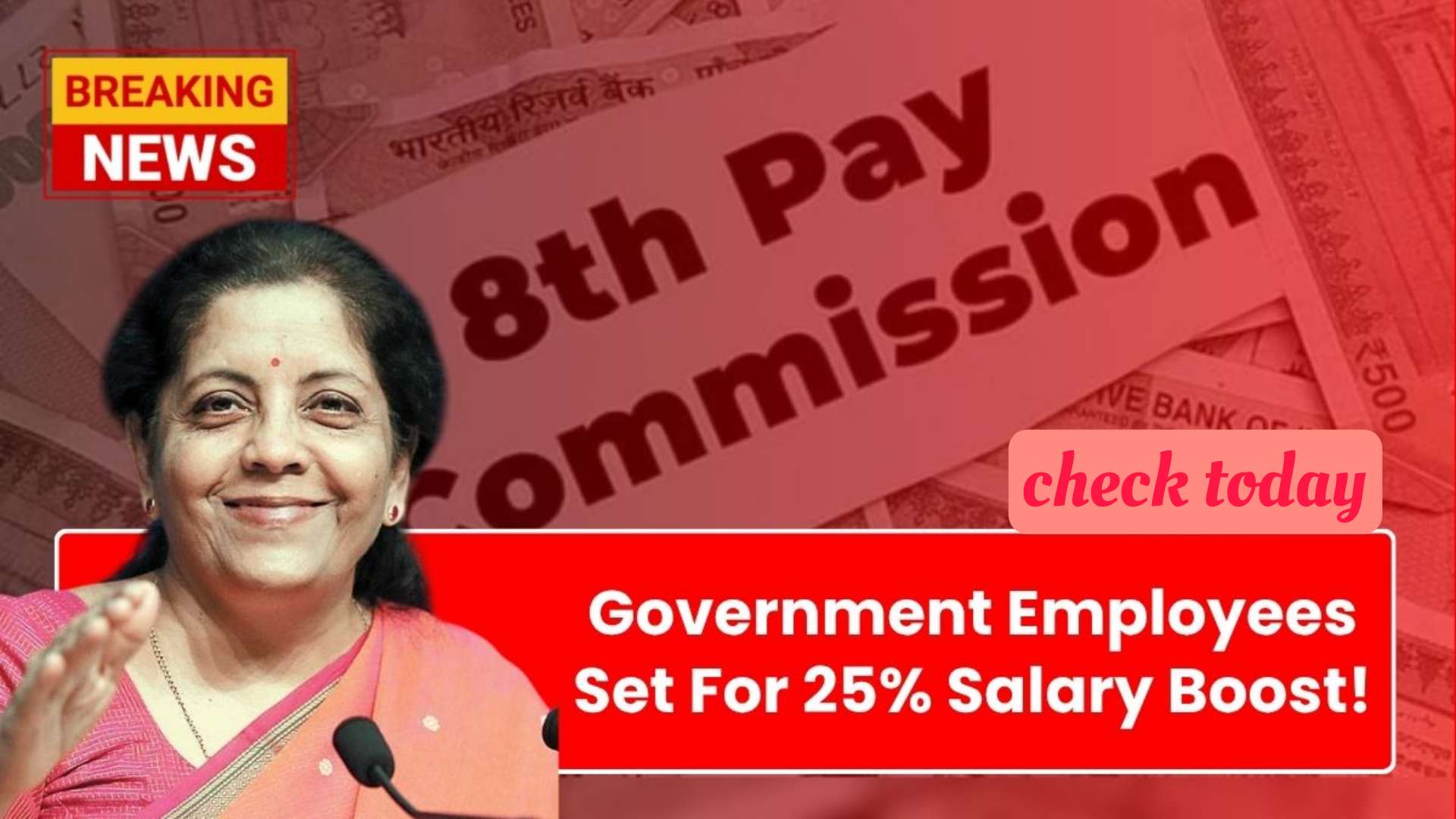The 8th Pay Commission has become the biggest topic of discussion among government employees across India. With official approval in early 2025, this new pay revision is expected to bring a massive salary boost, revised allowances, and higher pensions for millions of employees and pensioners. Implementation is expected from January 1, 2026, replacing the current 7th Pay Commission structure.
Background and Current Status
The Union Cabinet approved the 8th Pay Commission in January 2025 to review and revise the salary structure of central government employees. The commission will also address allowances, pensions, and other benefits. The Terms of Reference are yet to be finalized, but preparations for the framework are underway. The new structure is expected to take effect from January 2026.
Expected Salary Hike
According to early estimates, employees can expect a salary increase of around 30 to 34 percent. The key deciding factor will be the fitment factor, which determines the multiplier used to calculate new salaries. The 7th Pay Commission used a factor of 2.57, while the 8th Pay Commission is expected to set it between 2.86 and 3.00. If this happens, a basic pay of ₹20,000 could rise to around ₹56,000 or more. The minimum salary under the 7th Pay Commission was ₹18,000, and under the new structure it may increase to around ₹41,000 to ₹51,000.
Impact on Pensions
Along with salary revisions, pensions are also expected to get a major boost. The minimum pension, which currently stands at ₹9,000 per month, could increase to around ₹18,000 or even ₹20,000 depending on the final fitment factor. This move aims to bring financial stability to millions of retired employees who depend on pension income.
Allowances and Dearness Allowance
The 8th Pay Commission will revise all major allowances such as House Rent Allowance, Travel Allowance, and Medical Allowance. There is also speculation that Dearness Allowance (DA) may be merged into the basic pay once the new structure is implemented. The government recently approved a 3 percent DA hike for central employees under the 7th Pay Commission, and this is expected to be the last DA update before the 8th CPC comes into force.
Beneficiaries of the 8th Pay Commission
Nearly 49 lakh central government employees and around 65 lakh pensioners will benefit directly from the new commission. The biggest advantage will go to lower-grade employees, who may see the largest percentage increase in pay. The new pay structure will also aim to reduce the gap between lower and higher pay levels, creating a more balanced wage framework across departments.
Implementation Timeline
The official timeline indicates that the Terms of Reference will be issued soon, followed by the formation of the commission team. Recommendations are expected to be submitted by mid-2025, and the implementation date is set for January 1, 2026. While delays are possible, the government is under pressure to meet this timeline due to public expectations and upcoming elections.
Challenges Ahead
The biggest challenge for the government will be managing the fiscal pressure caused by the new pay structure. A 30 percent or more hike across all levels could significantly increase expenditure. However, the government sees this as a necessary step to boost morale and productivity among employees, as well as to keep pace with inflation and living costs.
What Employees Should Expect
Once implemented, employees will receive higher take-home pay, revised allowances, and better pension benefits. Salary arrears might also be paid for the months leading up to January 2026. The revised structure is expected to improve disposable income, which could further boost consumption and the economy. Employees are advised to review their current pay level and prepare for adjustments in income tax and provident fund contributions once the new system is applied.
Conclusion
The 8th Pay Commission marks a major turning point for India’s central government employees. A salary hike of around 30 to 34 percent, increased pensions, and upgraded allowances will improve financial security for millions of workers. With implementation expected from January 2026, this reform is set to bring renewed optimism and stability to the public sector workforce, making it one of the most awaited salary updates in recent years.
